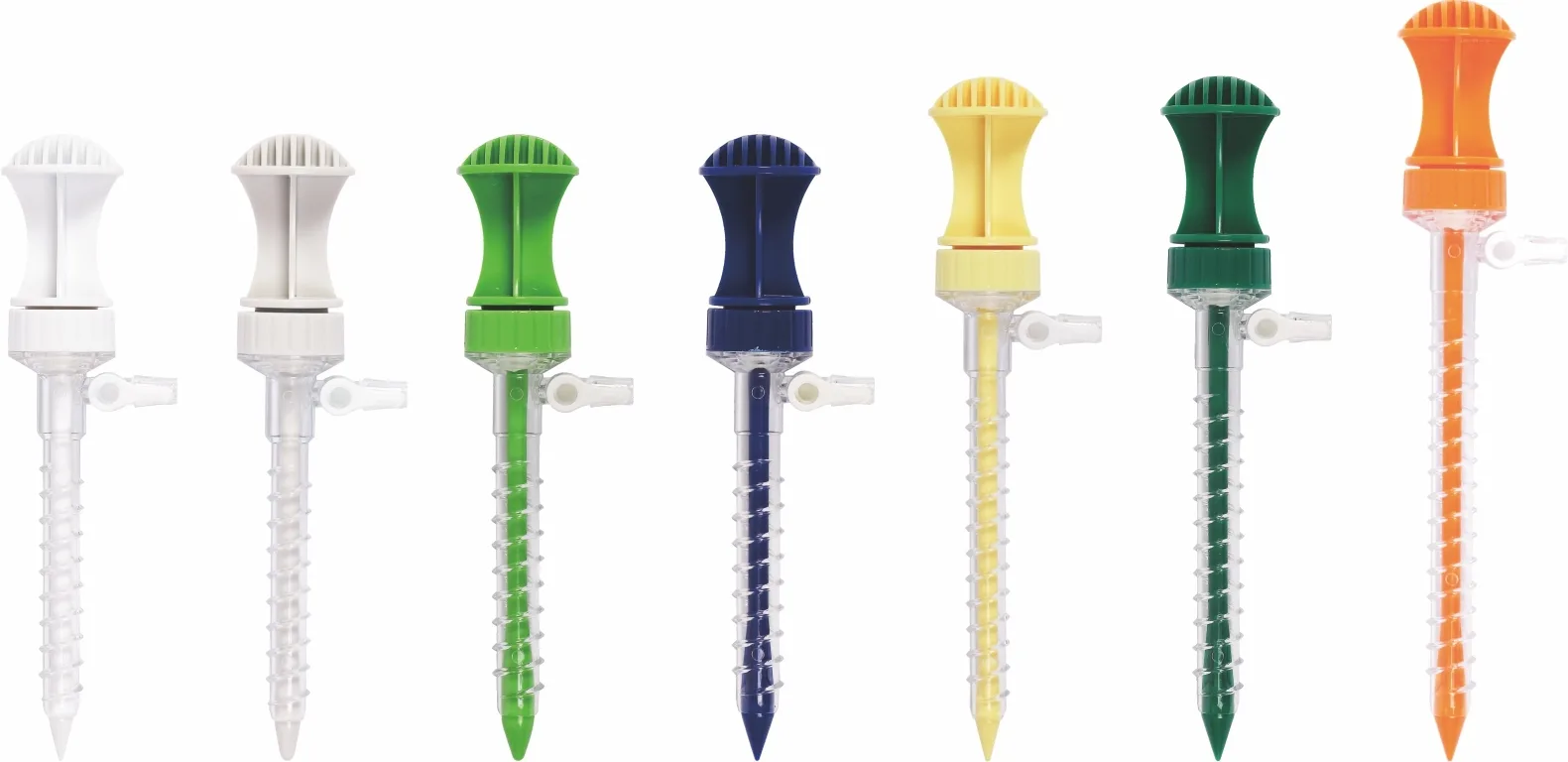- Home
- All Products
- Laparoscopic Instruments
- Disposable Arthroscopy Trocar
Disposable Arthroscopy Trocar
Disposable Arthroscopy Trocar
A disposable arthroscopy trocar is a specialized surgical instrument used in minimally invasive procedures to access joints for diagnostic and therapeutic purposes. It is particularly common in arthroscopic surgeries, where it serves as an entry point for arthroscopic cameras, instruments, and fluid management systems. Using disposable trocars offers advantages in terms of sterility, convenience, and cost-effectiveness.
Available as
6.5mm Cannula 70mm Length
Blunt 6.5mm Cannula 70mm Length
6.5mm Cannula 90mm Length
8.5mm Cannula 70mm Length
Blunt 8.5mm Cannula 70mm Length
8.5mm Cannula 90mm Length
Components and Design
- Cannula: The hollow tube that remains in place once the trocar is inserted. It provides a pathway for arthroscopic instruments.
- Obturator: The sharp or blunt insert used to penetrate the joint capsule and soft tissues. The obturator is removed after the cannula is placed.
- Handle: Ergonomically designed for easy grip and control during insertion.
- Valve System: Ensures that fluid is maintained within the joint space and prevents leakage. Some designs also include stopcocks for fluid management.
- Distal Tip: Can be sharp or blunt, depending on the intended use and the specific procedure.
Uses
- Diagnostic Arthroscopy: Provides access for the arthroscope to visualize the inside of the joint.
- Therapeutic Arthroscopy: Facilitates the insertion of surgical instruments for procedures such as meniscectomy, synovectomy, cartilage repair, and ligament reconstruction.
- Fluid Management: Allows for the introduction and removal of irrigation fluids to maintain a clear visual field during surgery.
Advantages
- Sterility: Being disposable, each trocar is sterile-packed, reducing the risk of infection.
- Convenience: Eliminates the need for cleaning and sterilization, saving time and resources.
- Cost-Effectiveness: Reduces costs associated with instrument reprocessing and potential contamination.
- Consistency: Ensures consistent performance and sharpness, as each trocar is used only once.
Procedure
- Preparation: The joint is prepped and draped in a sterile manner. Local or general anesthesia is administered as needed.
- Incision: A small incision is made over the intended entry point.
- Insertion: The obturator (inside the cannula) is inserted through the incision and advanced into the joint space.
- Placement: The obturator is removed, leaving the cannula in place for the introduction of the arthroscope and other instruments.
- Operation: The surgeon performs the necessary diagnostic or therapeutic procedures using instruments introduced through the cannula.
- Removal: After completing the procedure, the cannula is removed, and the incision is closed.
Types and Variations
- Sharp vs. Blunt Obturators: Sharp obturators are used for initial entry, while blunt obturators may be used to minimize tissue trauma.
- Valved vs. Non-Valved Cannulas: Valved cannulas help control fluid flow and prevent leakage, essential for maintaining a clear visual field.
- Different Sizes: Available in various diameters and lengths to accommodate different joints and procedures (e.g., knee, shoulder, hip, wrist, ankle).
Examples of Procedures Using Disposable Arthroscopy Trocars
- Knee Arthroscopy: Common procedures include meniscectomy, ACL reconstruction, and cartilage repair.
- Shoulder Arthroscopy: Includes rotator cuff repair, labral repair, and subacromial decompression.
- Hip Arthroscopy: Used for labral repair, femoroacetabular impingement (FAI) treatment, and cartilage procedures.
- Wrist and Ankle Arthroscopy: Involves procedures such as synovectomy, TFCC repair (wrist), and ligament repair.
Disposable arthroscopy trocars are essential tools in modern orthopedic surgery, offering significant benefits in terms of sterility, convenience, and overall surgical efficiency. They enable surgeons to perform minimally invasive procedures with enhanced precision and safety.







